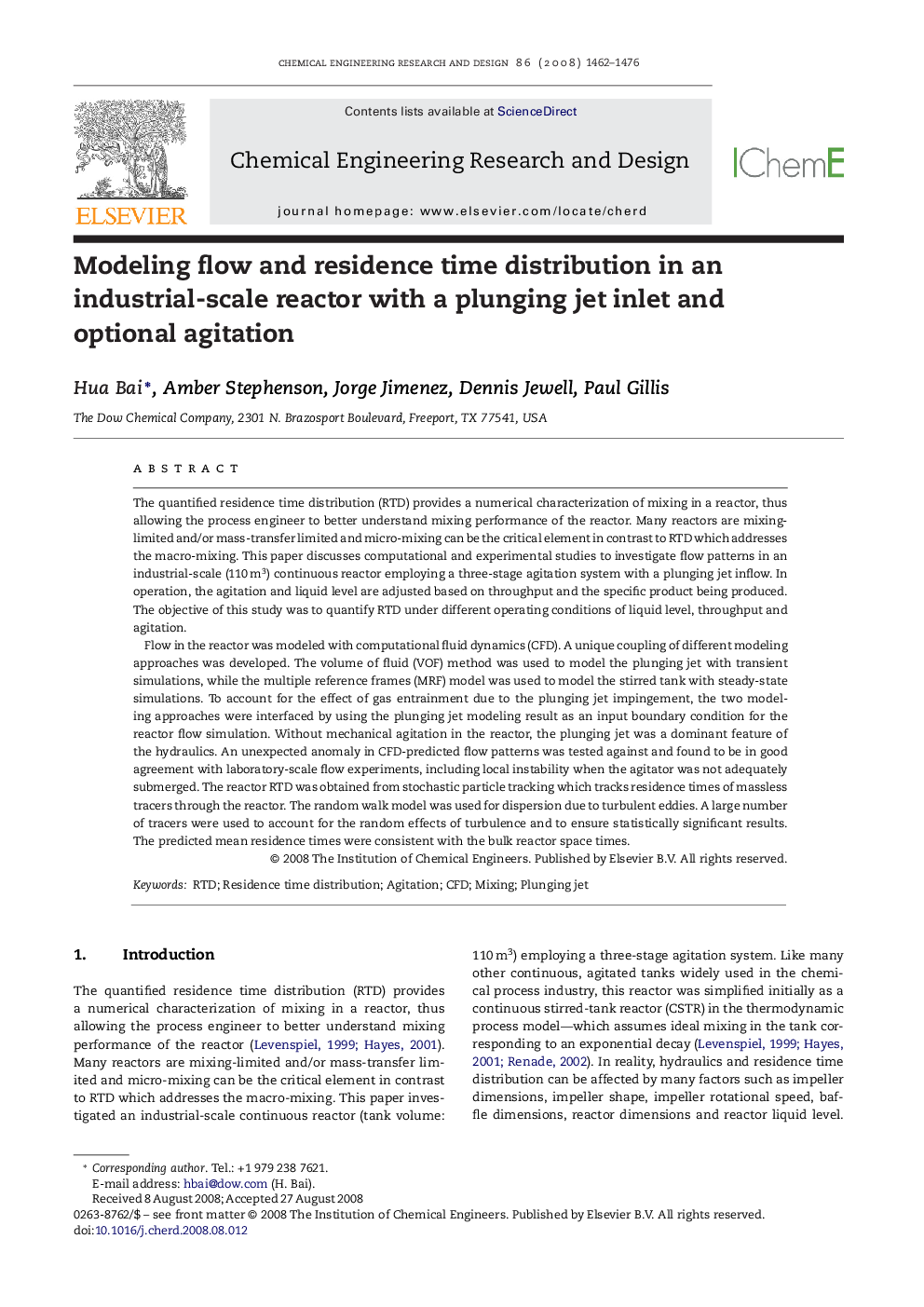| Article ID | Journal | Published Year | Pages | File Type |
|---|---|---|---|---|
| 621346 | Chemical Engineering Research and Design | 2008 | 15 Pages |
Abstract
Flow in the reactor was modeled with computational fluid dynamics (CFD). A unique coupling of different modeling approaches was developed. The volume of fluid (VOF) method was used to model the plunging jet with transient simulations, while the multiple reference frames (MRF) model was used to model the stirred tank with steady-state simulations. To account for the effect of gas entrainment due to the plunging jet impingement, the two modeling approaches were interfaced by using the plunging jet modeling result as an input boundary condition for the reactor flow simulation. Without mechanical agitation in the reactor, the plunging jet was a dominant feature of the hydraulics. An unexpected anomaly in CFD-predicted flow patterns was tested against and found to be in good agreement with laboratory-scale flow experiments, including local instability when the agitator was not adequately submerged. The reactor RTD was obtained from stochastic particle tracking which tracks residence times of massless tracers through the reactor. The random walk model was used for dispersion due to turbulent eddies. A large number of tracers were used to account for the random effects of turbulence and to ensure statistically significant results. The predicted mean residence times were consistent with the bulk reactor space times.
Related Topics
Physical Sciences and Engineering
Chemical Engineering
Filtration and Separation
Authors
Hua Bai, Amber Stephenson, Jorge Jimenez, Dennis Jewell, Paul Gillis,
